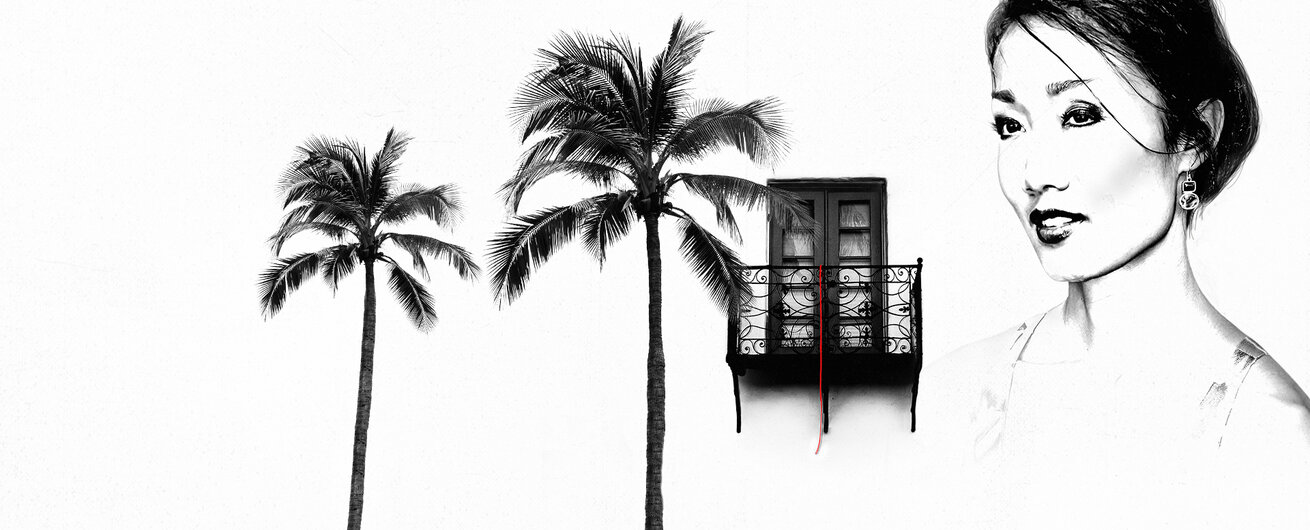Create a free profile to get unlimited access to exclusive videos, breaking news, sweepstakes, and more!
Is It Common For Women To Commit Suicide In The Nude?
Is it unheard of for women to commit suicide in the nude — as Rebecca Zahau is alleged to have done? History, psychiatry, Marilyn Monroe and Cleopatra may tell us something about what could drive a woman to do it.

Rebecca Zahau was found with her hands and feet bound, mouth gagged, naked on the grounds of the Spreckels Mansion in Coronado, California, where she lived with her millionaire boyfriend, Jonah Shacknai, in July 2011.
Her death was ruled a suicide by San Diego Sheriff’s Department investigators, despite her family’s suspicions of foul play, and myriad unusual pieces of evidence at the scene.
The case is the subject of Oxygen’s new investigative docu-series “Death At The Mansion: Rebecca Zahau.” In Oxygen’s new four-part special, former prosecutor Loni Coombs, investigative reporter Billy Jensen and former criminal investigator Paul Holes re-examine the evidence in the Zahau case, discovering startling new information and interviewing Zahau’s friends and family, investigators and neighbors.
One aspect of Zahau’s death that perplexes Oxygen’s investigators throughout the special is the 32-year-old Burmese immigrant’s nudity. Zahau’s sister, Mary Zahau-Loehner, also doesn’t believe Rebecca would have taken her own life in such a public way while she was naked.
“She never would have done it,” she told Oxygen.
Coombs agreed, adding that a woman stripping nude before taking her own life is an exceedingly rare event.
Just how often does it happen, however?
Professional and academic literature on naked suicide is scarce. However, perhaps the most notable example would be legendary Hollywood starlet Marilyn Monroe’s death by deliberate barbiturate overdose on Aug. 5, 1962.
Cleopatra, the oft-mythologized queen of Egypt, was also usually depicted as nude or near-nude at the time of her death in 30 B.C. The queen is popularly understood to have died by allowing a poisonous snake to bite her; however, her method of death is far from settled fact, per Smithsonian Magazine.
Monroe was found lying face down in bed, naked and clutching a telephone, when a psychiatrist who had been treating her broke into her room out of concern for her safety, according to a 1962 L.A. Times report.
The L.A. County Coroner’s Office, along with a team of psychiatrists who interviewed people close to Monroe about her mental state, concluded that the starlet’s death was a suicide, rather than an accidental overdose, because Monroe had several times the lethal dose of her prescription medication in her body, and the pills were apparently taken very quickly.
A number of alternate takes on Monroe’s death sprang up in the years to come. Popular conspiracy theories implicated J. Edgar Hoover, Jimmy Hoffa and even Robert and John F. Kennedy. However, in 1982, Los Angeles County District Attorney John Van de Kamp ordered a second look at Monroe’s death to determine if a criminal investigation should be conducted — his investigators found no evidence that she was murdered, according to a contemporaneous New York Times report.
In 2018, San Diego Sheriff Bill Gore also ordered a re-evaluation of the evidence in the Zahau case, following the civil verdict finding Adam Shacknai liable for his brother’s girlfriend’s death. Gore was similarly unmoved to change the department’s original 2011 findings, as reported by the San Diego Tribune.
Robert I. Simon, a former clinical professor of psychiatry and director of Psychiatry and Law at Georgetown University School of Medicine, was one of the foremost scholars in forensic psychiatry and the study of suicide, before his death in 2016. In his 2008 paper “Naked Suicide,” published in the Journal of the American Academy of Psychiatry and the Law, he offered some insight into what could be behind someone’s decision to end their life while naked.
When it comes to women, Simon noted, naked suicide is considered exceptionally rare, due to the popular concept of “feminine modesty” carrying on even through death.
“Conventional wisdom has it that a woman found hanging naked is most likely a homicide or a staged suicide,” he said, adding that it is not unheard of for women to hang themselves or induce asphyxia by other means while naked.
A suicide victim’s nudity could indicate a number of things about their psychological state or reasons for taking their own life, according to Simon. Some of the pychological themes present at naked suicides include the idea of rebirth or cleansing, atonement for guilt, or anger and the desire to traumatize surivors even further.
“Knowing that one's body will be found naked and taking the trouble to remove clothing has psychological import,” Simon said. “The state of an individual's clothing, including partial undress and nakedness, can provide important clues in a psychological autopsy.”
A naked suicide can also be an expression of “vulnerability, utter despair, desolation and worthlessness,” he added.
Investigators and members of the Shacknai family have guessed that Zahau was severely distraught and guilty at the time of her death, because her boyfriend’s young son, Max, suffered a fall while under her watch days earlier. The fall would eventually prove fatal.
Zahau’s family, however, insists that the 32-year-old would never commit suicide, no matter the circumstances, and has blamed her death on Jonah Shacknai’s brother, Adam.
Shacknai has maintained since 2011 that he had nothing to do with Zahau’s death.


























